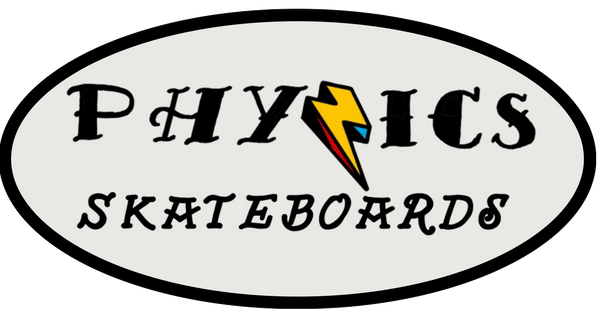Everything to Know About Skateboard Wheels
Everything to Know About Skateboard Wheels
Skateboard wheels are an integral part of your setup, influencing how your board feels, how it interacts with different terrains, and how it performs for various skating styles. From their size and hardness to shape and material composition, skateboard wheels play a significant role in determining your experience on the board. Whether you're a beginner, a seasoned street skater, or a downhill speed enthusiast, understanding the intricacies of skateboard wheels can help you make informed decisions and optimize your performance.
Anatomy of a Skateboard Wheel
- Material: Skateboard wheels are typically made from polyurethane (PU), a durable and versatile material that offers resilience, grip, and smoothness. Modern advancements in polyurethane technology have enabled manufacturers to create wheels with unique properties suited for different skating styles and conditions.
- Core: Some wheels have a plastic or composite core, which serves as structural support, reduces the wheel’s weight, and provides a consistent surface for mounting bearings.
- Contact Patch: The area of the wheel that touches the ground. Larger contact patches offer better grip and stability, while smaller patches provide easier slides and less friction.
- Lip Profile: The edges of the wheel, or "lips," can be either sharp or rounded. Sharp lips provide more grip, while rounded lips are better for sliding.
Wheel Sizes: Diameter and Width
Diameter
The diameter of a skateboard wheel is measured in millimeters (mm) and typically ranges from 48mm to 75mm. The size of the wheel affects speed, acceleration, and maneuverability:
- Small Wheels (48mm–54mm): Best suited for technical street skating, providing quick acceleration and a lower center of gravity. Ideal for tricks like kickflips and ollies.
- Medium Wheels (54mm–60mm): A versatile choice for park and transition skating, offering balanced speed and stability.
- Large Wheels (60mm+): Commonly used for cruising, downhill, and vert skating, offering high top speeds and better performance on rough surfaces.
Width
Wheel width is less commonly discussed but equally important. Wider wheels provide greater stability and grip, making them ideal for cruising or downhill skating. Narrower wheels are lighter and allow for more technical control, favored in street skating.
Durometer: The Hardness of Skateboard Wheels
- Soft Wheels (78A–90A): Offer excellent grip on rough surfaces, absorb shocks and vibrations, making them ideal for cruising and longboarding. However, they are slower and less durable for tricks.
- Medium-Hard Wheels (91A–97A): Provide a good balance between grip and speed, suitable for park skating and transition skating. They are less forgiving on rough surfaces.
- Hard Wheels (98A–101A): Faster and more responsive, making them ideal for street and technical skating. They offer minimal grip on slippery surfaces and are rough on uneven terrain.
- Ultra-Hard Wheels (84B+): Designed for smooth surfaces and precision slides, these are a favorite among technical skaters.
Types of Skateboard Wheels
- Street Wheels: Size: 48mm–54mm; Durometer: 95A–101A. Small and hard, designed for technical tricks and smooth pavement.
- Park Wheels: Size: 54mm–60mm; Durometer: 97A–101A. Slightly larger and harder, offering speed and stability for ramps and bowls.
- Cruising Wheels: Size: 60mm+; Durometer: 78A–90A. Soft and large, ideal for rough streets and long-distance skating.
- Downhill Wheels: Size: 65mm–75mm; Durometer: 78A–88A. Wide contact patches and sharp lips for maximum grip and stability.
Wheel Profiles and Shapes
- Classic Profile: Rounded edges for versatility, ideal for all-around skating.
- Conical Profile: Wider contact patch for more grip, preferred for bowls and vert skating.
- Radial Profile: Curved edges for smooth transitions, great for carving and cruising.
- Square Profile: Sharp edges for maximum grip, common in downhill and freeride wheels.
Maintaining Your Skateboard Wheels
- Remove wheels and clean with soap and water to eliminate dirt and debris. Dry thoroughly to prevent bearing corrosion.
- Rotate wheels periodically to ensure even wear. Swap the front and rear wheels or flip them as needed.
- Check for flat spots caused by power slides or sudden stops. Replace wheels with flat spots to avoid vibrations and inconsistent performance.
Innovations in Skateboard Wheel Technology
Modern skateboard wheels are the result of continuous innovation. Recent advancements include:
- Dual-Durometer Wheels: Combine a hard core with a soft outer layer for the best of both worlds: speed and grip.
- Urethane Formulas: High-rebound urethane provides better energy return for smoother rides and higher speeds.
- Hollow Core Wheels: Lightweight designs that don’t compromise durability.
Common Questions About Skateboard Wheels
- How Long Do Skateboard Wheels Last? Wheels typically last between 3 months to several years, depending on usage and terrain.
- Can You Mix and Match Wheels? While it’s possible, matching wheel types and sizes ensures better performance and balance.
- Are Bigger Wheels Always Faster? Larger wheels provide higher top speeds but may accelerate slower compared to smaller wheels.
Conclusion
Skateboard wheels are more than just components; they define how your skateboard interacts with the world. By understanding their size, hardness, shape, and intended use, you can select the perfect wheels for your skating needs. Whether you're perfecting tricks in the street, cruising through town, or speeding down a hill, the right wheels can elevate your skating experience to new heights.
Looking for a new skateboard? Check out our collection of high-quality skateboard decks!
